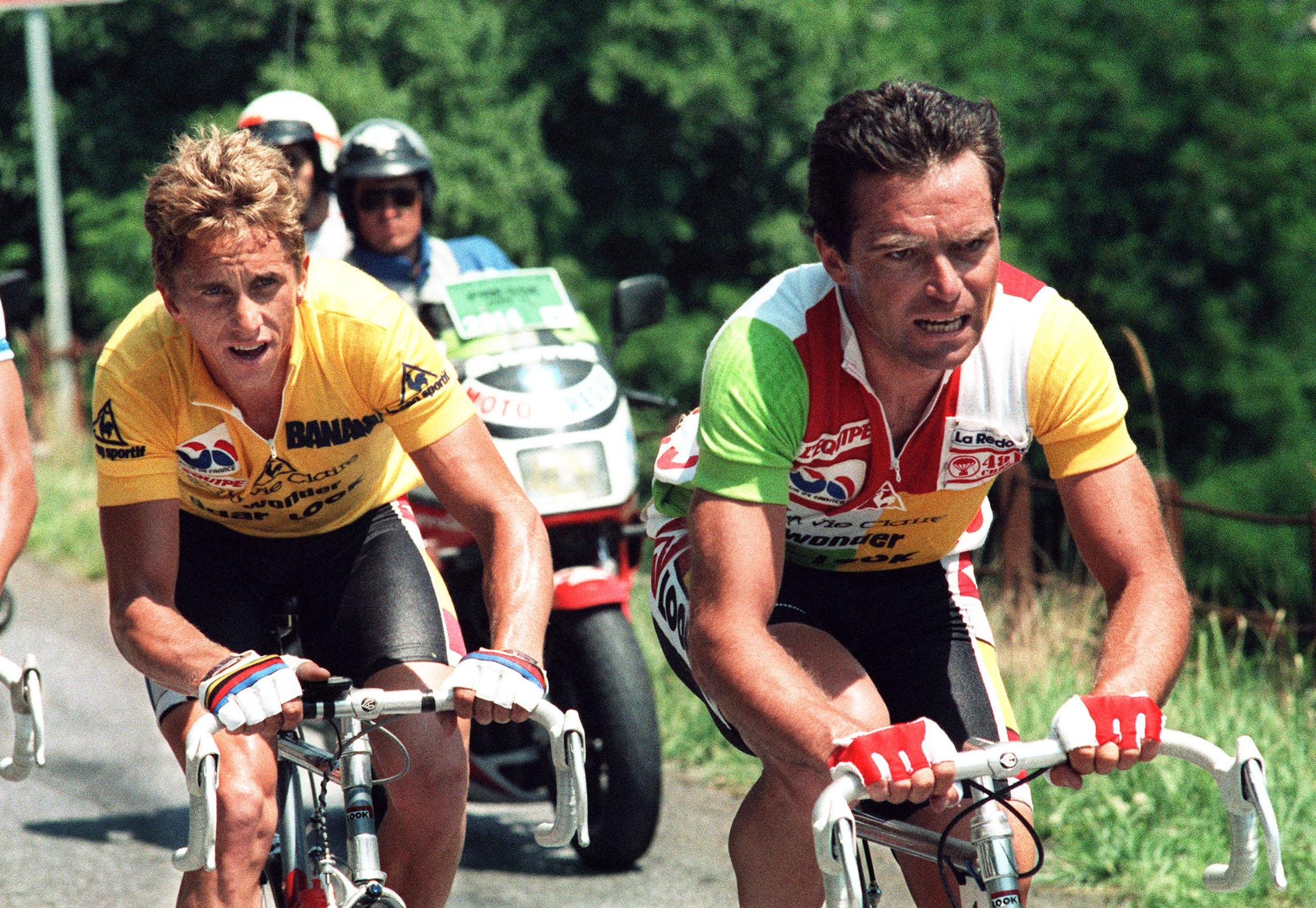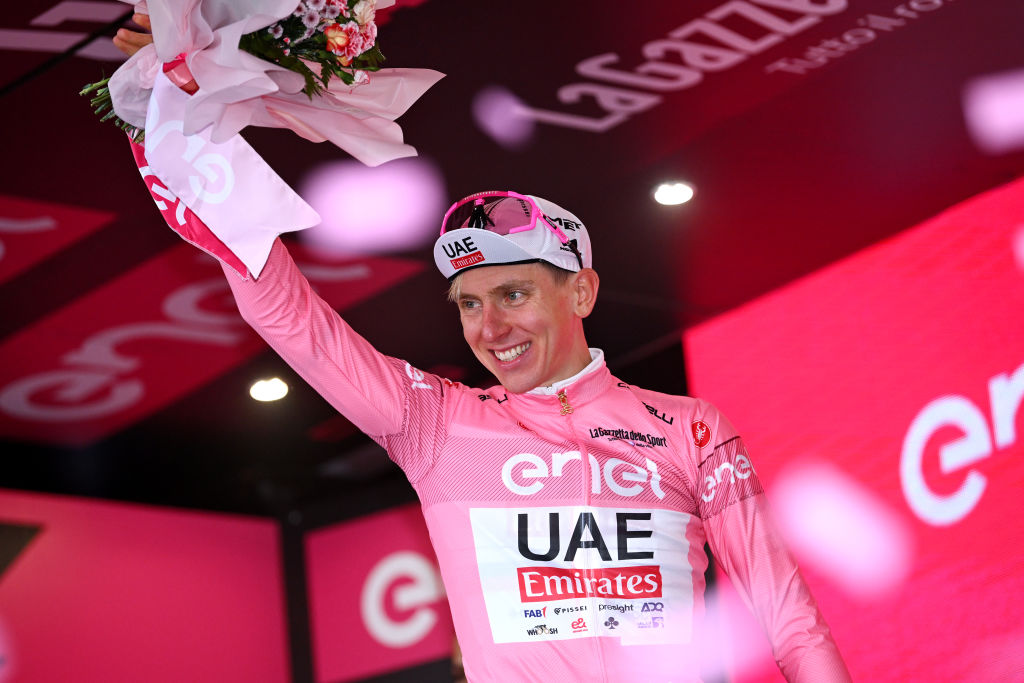La Vie Claire: 80s cycling icons
Hinault's and LeMond's team served up Tour de France drama and a legendary jersey

La Vie Claire spent less than a decade in the professional peloton and shut up shop nearly 30 years ago, but the French team left a mark on the sport that still stands out today.
Of course, the two Tour de France victories played a big part in that. In 1985, Bernard Hinault collected a record-equaling fifth title, which remains the last time a Frenchman won La Grande Boucle. The following year saw ‘the Badger’ go head-to-head with his own teammate, Greg LeMond, in one of the most famous – or infamous – Tours in history.
But for all the sporting success, the iconography of La Vie Claire is wrapped up in the jersey. At the mere mention of those three words, what springs most readily to mind are the rectangles. Those beautiful rectangles.
Even among the outlandish designs we’ve seen over the years, La Vie Claire’s jersey was unlike anything that went before in professional cycling. There’s certainly been nothing like it since. It’s the only jersey to have been based on the work of an artist, namely Piet Mondrian and his compositions with red, yellow and blue.
As with every great jersey, there’s a great story behind it. As detailed in ‘Slaying the Badger’, a book on the 1986 Tour, it only came about by chance, after the Parisian stylist who’d been commissioned came up with an almost exclusively black design. “No, no – cyclists don’t wear black jerseys,” team manager Paul Kochli reportedly said, at which point a young student piped up and suggested: “What about a Mondrian?” The student was apparently receiving “daggers” from the stylist as she sketched out the rectangles, but Kochli and everyone else were in agreement: “It was genius.”
The jersey was debuted in the pro peloton in 1984, as the team embarked on their first season. The previous year, Hinault had grown frustrated at life at Renault, Cyrille Guimard’s all-conquering French team where he’d won four Tour de France titles but had just watched from the sidelines as the younger Laurent Fignon win his first. He met with Bernard Tapie, an entrepreneur who was snapping up bankrupt businesses, and a plan was struck.
Tapie would use the vast sums he was making to create a team built around Hinault, sponsored by his own companies. Alongside La Vie Claire (an organic food store), there was Teraillon, Radar, and Look, whose bikes and pedals keep the Mondrian palette alive today in the WorldTour.
The latest race content, interviews, features, reviews and expert buying guides, direct to your inbox!
The first season didn’t go exactly to plan, as the knee injury that had ruled Hinault out of the 1983 Tour caused a slow start and he had to settle for runner-up at the Tour behind Fignon, the new French kid on the block. 1985, however, was a different story. Hinault won his third Giro d’Italia and followed it up with a fifth Tour de France.
Yet, despite this blaze of glory, the signs of decline were already on the wall. In what was evidence La Vie Claire wasn’t just a Hinault project, Tapie had started to lure LeMond as early as the 1984 Tour. With vast sums of money on the table at the Tapie empire, and with the prospect of spending years in Fignon’s shadow under Guimard, LeMond put pen to paper.
At the 1985 Tour, Hinault started strong but weakened in the second half of the race. LeMond, by contrast, was getting better and better, and their worlds collided on the stage to Luz Ardiden in the Pyrenees. LeMond went up the road with Stephen Roche, as Hinault was distanced, but the orders came from the team car not to collaborate. LeMond relented but was indignant, and the next day he stretched the yellow jersey group to the point Hinault began to lose contact.
Hinault went on to win his fifth Tour, and LeMond, clearly feeling he was the stronger of the two, settled for second. He had, however, made his ambitions clear, and Hinault himself vowed that the following year he would move aside and support the American.
To what extent that promise was honoured will be the subject of eternal debate. Hinault attacked relentlessly in the 1986 Tour, putting five minutes into LeMond on the first Pyrenean stage, only to lose most of it when he went on the offensive again the very next day, and cracked. The pair continued to knock chunks out of each other in the final week in the Alps, they didn’t talk in the hotels, and the team was split down national lines.
“It was a nightmare on that team,” LeMond says in William Fotheringham’s biography of Hinault. “It was pure war.”
Hinault has always maintained his aggressive racing in the 1986 Tour served to crush the opposition and pave the way for LeMond. LeMond has made it clear what he thinks of that reasoning. “That’s total bullshit. Everything Hinault did was in some way to screw me.”
And so the image of the pair arm-in-arm, smiling, crossing the line together in first and second place atop Alpe d’Huez, seems hard to believe. Hinault had attacked over the Galibier but LeMond held firm, and they took on the mythical hairpins together, seemingly coming to some sort of detente. Hinault crossed the line first, for his 27th and penultimate stage win, while LeMond took yellow to Paris.
That was the high point for La Vie Claire. Hinault retired at the end of the season, and LeMond hardly raced in 2017 after a life-threatening shooting accident. He left the team at the end of 1987, as did Kochli. Tony Rominger and Laurent Jalabert would begin to make their names, but the team was wound up at the end of 1991.
The turn of the decade had already marked a crucial turning point: the jersey changed, and the rectangles were no more. In the final years, Toshiba was the title sponsor, but the team will always be remembered as La Vie Claire.
They weren’t around for long, but they served up some of the most memorable moments in Tour de France history, and did so in a jersey that will never die.
This article was written in support for Prendas Ciclismo.


